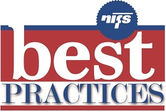Americans are fond of a quick fix, in weight loss in particular. According to the American Society of Metabolic and Bariatric Surgery, surgical weight loss procedures increased from 13,000 in 1998 to 220,000 in 2008. A survey in the United Kingdom evaluated public attitudes toward such cosmetic surgery for weight loss and found that 59% of women would choose surgery over changing eating habits and engaging in regular exercise to lose weight or change their body shape.
Anecdotally, our corporate fitness staff see these stories in the employees they serve as well. As a nation, we haven’t moved the needle on helping adults get more movement in their daily lives, and the numbers inside the corporate fitness center have peaked as well. So, what are we doing wrong?
Certainly, there are work-related and personal-life pressures that the staff in your corporate fitness center cannot impact, and there will always be a cap on how many employees they can reach. But in some ways, we’ve fallen away from basic services and simple program design as tools to draw participants into the programs. Businesses have committed (right or wrong) their focus to outcomes-based wellness offerings, and looked to biometric data and HRA results for those outcomes. Businesses have also turned (in droves) to wearables as a tool to help employees move more; the jury is still out on their long-term effectiveness.
NIFS150 Encourages More Physical Activity
In an effort to get back to simple measures designed to help participants (1) understand their fitness level, and (2) move more minutes each day, our staff designed a simple NIFS150 program where participants were encouraged to accomplish 150 minutes of physical activity per week for eight weeks and complete a pre- and post-program fitness assessment.
Participants were able to earn their 150 minutes anywhere, anytime—we simply wanted them working to achieve the research-backed recommendation from the CDC. We pulled fitness assessments into the mix as a throwback to some older research performed by Dr. Steven Blair and colleagues that was published in the April 1995 issue of the Journal of the American Medical Association. That research showed that improving fitness level (defined by cardiovascular endurance) can decrease mortality risk.
Forty percent of the initial 700 participants in the NIFS program completed at least 150 minutes of activity per week all eight weeks, and the staff completed assessments on 198 participants. Almost half of the participants indicated that this was the first NIFS program they’ve tried, so we’re pleased we hit a sweet spot for so many new folks!
More than 75% of participants reported that the challenge helped them be more active than usual. Still, it’s worth noting that only one third of participants actually used the fitness center more during the program. You might think we were disappointed that more participants didn’t flock to the fitness centers with this client to gain their 150 minutes. After all, the program ran through the first quarter of 2015 in Indiana; it’s not like it was prime weather for exercising outside. Our priority with this initiative was to help employees be more physically active. We definitely keep track of visits, memberships, and other fitness center-related metrics, but we think it’s a win that we drew in so many newbies and that participants were more active than usual during the challenge.
What We Learned from the Data
In addition to gaining some feedback from all the participants, we also surveyed those who completed fitness assessments as part of the program. We learned that
- 70% of those who responded to the survey had never participated in a fitness assessment before.
- 62% are now more likely to be active in their corporate fitness center.
- 70% intend to continue with a periodic fitness assessment to track their progress on fitness-specific goals.
Our staff continue to provide innovative programming for our clients. But this particular program points to just how simple a science-based offering can be yet still create impact.
How are you creating impact through corporate fitness programming? Looking for more program ideas to get your creative juices flowing? Check out our Best Practices series—click on the button below to find out more.

